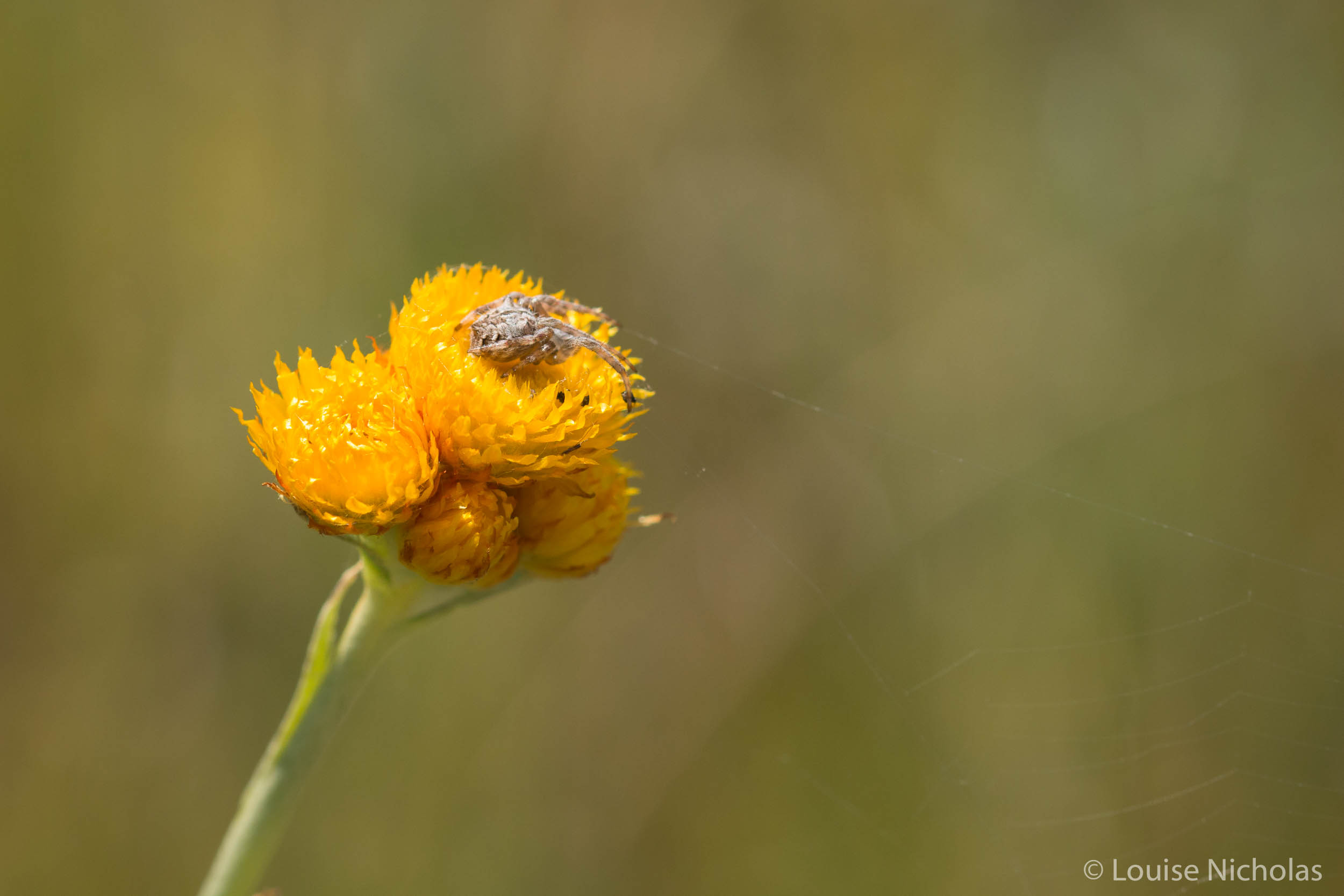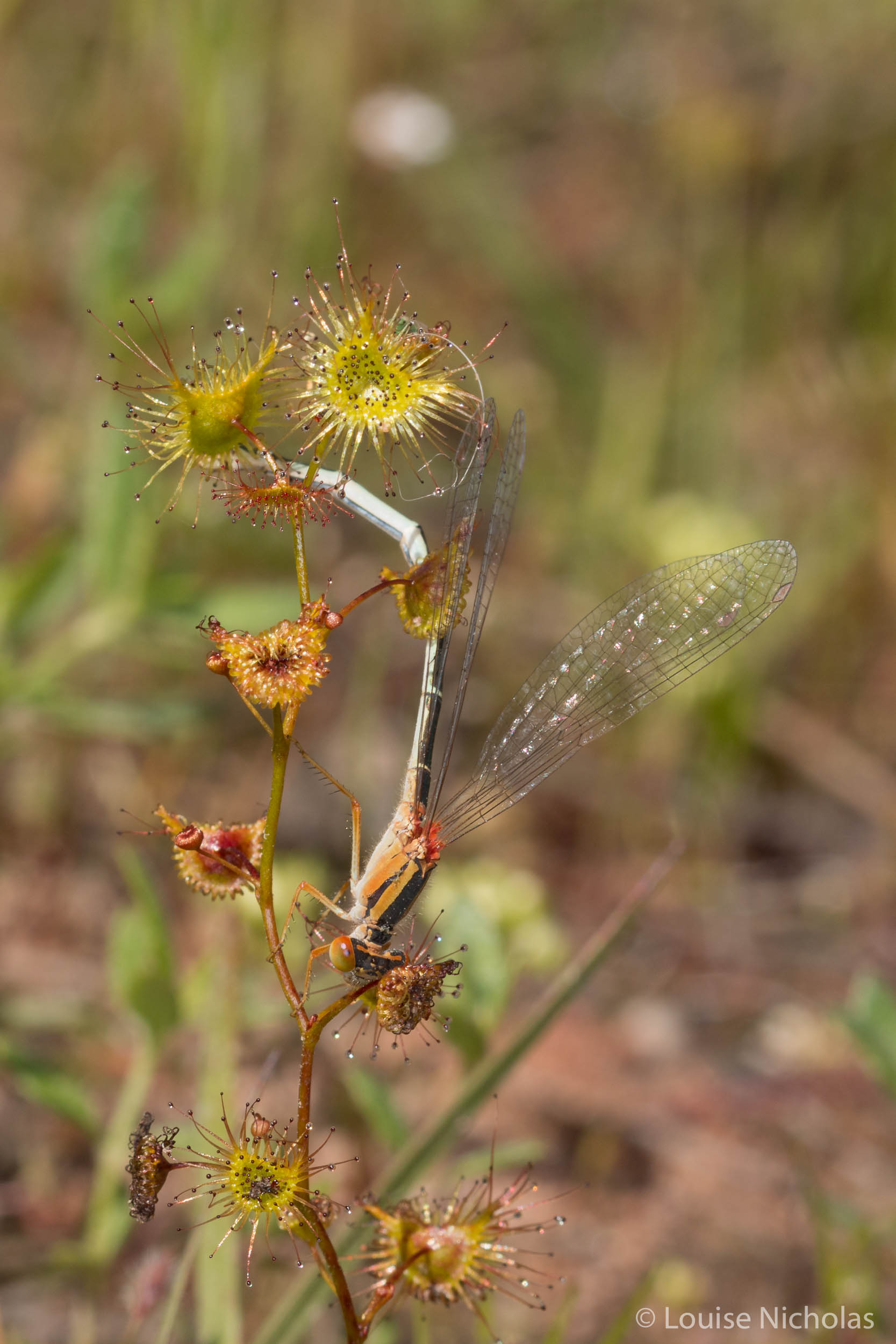The weekend my Spider Orchid cherry was well and truly popped.
/Featherheads (Ptilotus macrocephalus)
A trip to the Grampians would usually muster thoughts of adventures through forests, hiking up the peaks of mountains and gazing at waterfalls, but not this time. We were a small team of plant nerds on a mission to inspect vegetation along isolated roadsides, in old cemeteries and forgotten small-town commons in search of native wildflowers in the tiny remnants of grassland left in the Western Plains of Victoria.
Wielding cameras with macro lenses, field guides and multiple blocks of chocolate, we kicked off our expedition at Rokewood Cemetery. Despite the sun having risen hours earlier, around nine o’clock we caught a native bee having a lazy snooze in a Golden Moth Orchid. Carefully treading through the Kangaroo and Wallaby Grasses, we spotted plenty of Sundews, Rice Flowers, Milkmaids and Sun Orchids, which would open once the day had warmed up sufficiently. As an extra bonus, on our way out we saw a small patch of the endangered Hoary Sunray!
It was a promising start, so we drove on and followed our noses, screeching to a halt at patches of roadside vegetation that caught our attention. We saw hundreds of Featherheads bobbing in the wind and Everlastings with a beautiful golden glow in the mid-morning sun. I’m sure most drivers zoom past this scene every day without realising quite how special and rare it is.
Arriving in the sleepy town of Woorndoo, we used the less than salubrious toilet facilities before exploring the “common”, an area of reserved land between some houses. It was impossible to step through without squashing Sundews, Sun Orchids, Bluebells, Scaly and/or Wiry Buttons, Chocolate Lilies, Bulbine Lilies and fat tufts of native grasses. I’d never seen such a variety of wildflowers in such huge numbers! It was truly something to behold and photos can’t quite capture the scale.
Back on the tarmac, more emergency braking procedures were practiced when we were confronted by a vast carpet of purple on the right. It was literally thousands upon thousands of vibrant Sun Orchids! We wandered around, generously donating blood to the mozzies while soaking up the moment, feeling lucky to be there at the right time to catch it.
Staying in the Grampians that night was everything you could wish for when camping: a warm fire, great company and a sound sleep in a tent that didn’t leak or collapse - always a bonus! Dessert was expertly toasted marshmallows, shoved into one’s gob with a piece of nutty chocolate at the same time (a Smore minus the biscuit). Delicious!
I woke up to the sweet sound of Magpies warbling and my tent smashing into my face. The wind had picked up considerably and the sky was an ominous grey but that didn’t stop us, Lake Fyans beckoned…
I was promised Spider Orchids and I wasn’t disappointed, this grassy woodland was teeming with them! I can honestly say my Spider Orchid cherry was well and truly popped. The wind and clouds were making photography tricky, but a new toy (a ring flash) helped to offset the challenging conditions. I managed to capture a pollinator hard at work, a dragonfly caught in a Sundew and a tiny insect exploring the depths of a Green-comb Spider Orchid. All these little details that usually go unnoticed were spotted in milliseconds with our band of eager-beaver-botanists scouring the ground.
The journey home was a bit melancholy at times as we pondered what the landscape would have looked like before Europeans arrived. The plains would have been covered in vast swathes of wildflowers, just like the ones we’d seen small patches of. It put into perspective just how much the environment has been altered and how important those small remnant areas are now. It was a pleasure and a privilege to share the weekend with like-minded nature nerds who were keen to show me these special spots.
I look forward to continuing this tradition next spring and introducing other people to the wonderful wildflowers of western Victoria!













